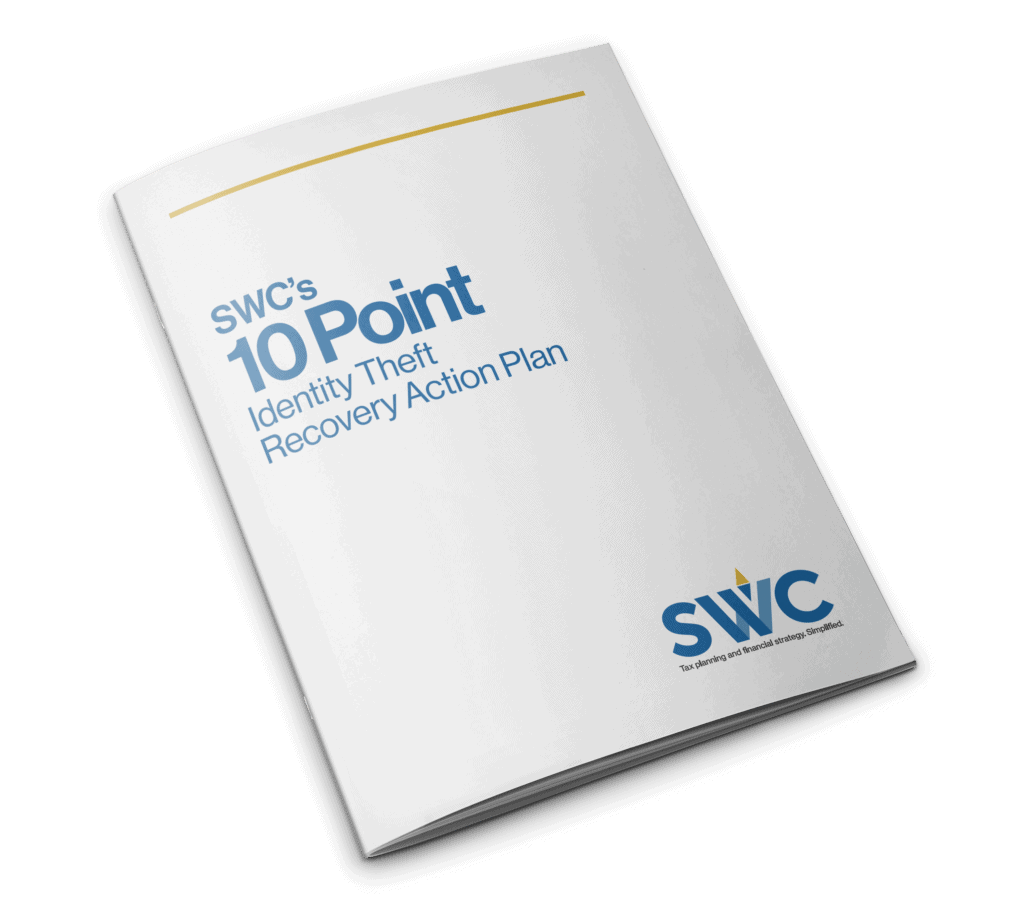SWC’s 10 Point Identity Theft Recovery Action Plan Means You Can Close the Barn Door
Despite huge advances in cyber security, identity and digital wallet theft is on the rise, and experts cite a perfect storm of circumstances as a major reason.
For one thing, more people are working from home, and they’re working without the protections of corporate networks which are more reliable at blocking phishing schemes than home networks are. In addition, there are more transactions being handled online these days, including the electronic forwarding of unemployment checks and other government benefits.
Then there are the lingering fears about COVID that make some people vulnerable to online tactics dreamed up by nefarious hackers that enable them to steal your personal information and access your online accounts. And having more of your information stored in the cloud doesn’t help matters in the least.
We’ve all heard the expression about “shutting the barn door after the horse has bolted.” It’s a folksy idiom that means it’s too late to try and stop something that has already happened. It’s a futile effort because, of course, the horse is history.
Unfortunately, even if you are being careful and doing all the right things to prevent identity theft, you can still fall victim to it. That’s why it is so important to know how to recover when the unforeseeable and unavoidable happens to you.
Which is why, in this post, I present SWC’s 10 Point Identity Theft Recovery Action Plan.
Rest assured that, as your trusted tax planning and financial strategy adviser, we take every precaution to safeguard your personal information, and we’re here to help. If you’ve fallen victim to identity theft, call our offices to find out how we can be of service. We’ll get your wayward steed back in the stall.
Step 1: Don’t Panic
Fear increases your vulnerability to identity theft. Panic makes it worse. You’re not legally liable for crimes that other people commit using the personal information they stole from you. So just scratch that concern off your list.
Likewise, if someone used your personal information to steal from you, you should be able to get your money back. For example, if a con artist filed a fraudulent tax return using your name and their address to steal your tax refund, the Internal Revenue Service (IRS) still owes you that refund.
Pro Tip: While you shouldn’t panic, you should act with a sense of urgency. The faster you do all the right things, the less damage you’re likely to suffer, and the greater the chances the perpetrator of the crime(s) will be caught and brought to justice.
Keep a detailed record of all the steps you take to curtail the damage, along with all the documentation you collect along the way. A written record will smooth the path to recovering any losses and protecting you from any losses that others (for example, your bank or creditors) may suffer as a result.
Step 2: Contact All Organizations That May Be Impacted
Although identity theft involves your personal information, it also impacts companies and organizations you do transactions with, so be sure to involve them in your recovery plan: Continue reading…


